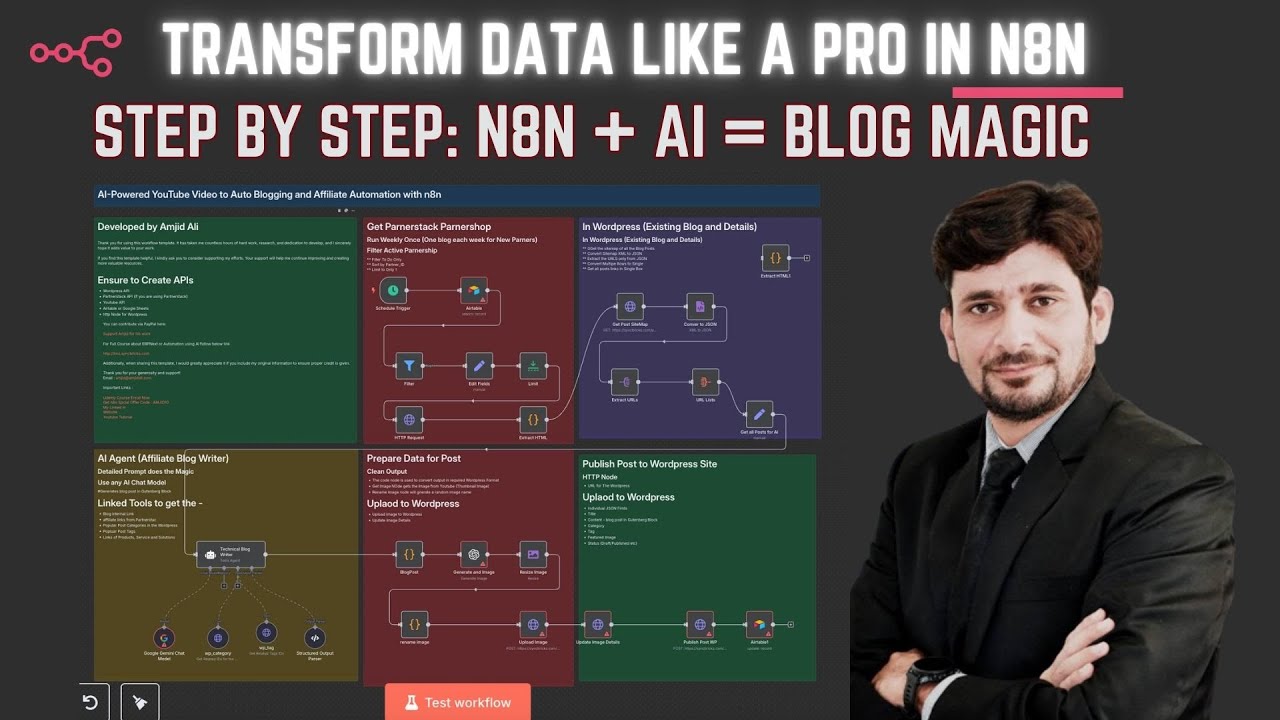
AI agents are transforming industries with real-world applications like:
- Customer service automation including query classification and response.
- Business process automation such as refund approvals and document review.
- Research assistance, email and file organization.
- Software development with AI coding assistants that understand complex codebases.
- Scheduling and task management automation.
An excellent tool highlighted is AugmentCode, a coding assistant that excels at understanding large production codebases, offering powerful indexing and agent-based code interactions. Check out their 14-day free trial for an enhanced AI coding experience.
Recommended Further Reading and Resources
- Google Agent Whitepaper
- Anthropic’s Guide to Building Effective Agents
- OpenAI Practical Guide to Building AI Agents
Internal Links You Might Find Useful
Conclusion: Mastering AI Agents for Future Automation
Understanding and effectively building AI agents is a cornerstone for anyone looking to leverage AI for automation, development, and business innovation. By following the fundamentals distilled from Google, Anthropic, and OpenAI, focusing on the agent components, patterns, safety measures, and practical applications, you can create powerful AI-driven systems that add significant value. Remember to focus on outcomes, not unnecessary complexity, and maintain human oversight to ensure reliability and ethical deployment.
Explore the resources and tools mentioned to deepen your expertise and start building your AI agents today.
Safety is paramount. LLMs inherently hallucinate, so robust guardrails are critical to prevent errors and unintended actions. Common safety practices include:
- Restricting tool permissions (e.g., read-only database access)
- Human-in-the-loop oversight for approving critical actions
- Filtering outputs to remove sensitive or irrelevant content
- Extensive testing in safe, controlled environments before production deployment
The OpenAI guide provides in-depth discussion on guardrails, particularly important for compliance and reliability.
Best Practices for Building Effective AI Agents
- Start simple and iterate based on outcomes.
- Focus on clear instructions and system prompts.
- Ensure transparency by logging agent reasoning and decisions.
- Maintain continuous evaluation and refinement of models, tools, and prompts.
- Keep human oversight in critical decision points.
Real-World Use Cases for AI Agents
AI agents are transforming industries with real-world applications like:
- Customer service automation including query classification and response.
- Business process automation such as refund approvals and document review.
- Research assistance, email and file organization.
- Software development with AI coding assistants that understand complex codebases.
- Scheduling and task management automation.
An excellent tool highlighted is AugmentCode, a coding assistant that excels at understanding large production codebases, offering powerful indexing and agent-based code interactions. Check out their 14-day free trial for an enhanced AI coding experience.
Recommended Further Reading and Resources
- Google Agent Whitepaper
- Anthropic’s Guide to Building Effective Agents
- OpenAI Practical Guide to Building AI Agents
Internal Links You Might Find Useful
Conclusion: Mastering AI Agents for Future Automation
Understanding and effectively building AI agents is a cornerstone for anyone looking to leverage AI for automation, development, and business innovation. By following the fundamentals distilled from Google, Anthropic, and OpenAI, focusing on the agent components, patterns, safety measures, and practical applications, you can create powerful AI-driven systems that add significant value. Remember to focus on outcomes, not unnecessary complexity, and maintain human oversight to ensure reliability and ethical deployment.
Explore the resources and tools mentioned to deepen your expertise and start building your AI agents today.
Building AI systems often involves established design patterns:
- Prompt Chaining: Sequential execution of multiple agents.
- Routing: Using a master LLM to delegate tasks to specialized agents.
- Evaluator Loops: Self-correcting loops where one LLM critiques another’s output.
- Orchestrator and Worker Models: A primary agent managing multiple sub-agents.
- Autonomous Loops: Fully autonomous agents managing complex processes without human intervention.
Single Agent vs Multi-Agent Systems
Single agent systems are simpler and preferred where possible. However, as complexity or tool overload grows (typically beyond 10-15 tools), multi-agent systems or orchestrator-worker patterns become essential for scalability and maintainability.
AI Agent Safety and Guardrails
Safety is paramount. LLMs inherently hallucinate, so robust guardrails are critical to prevent errors and unintended actions. Common safety practices include:
- Restricting tool permissions (e.g., read-only database access)
- Human-in-the-loop oversight for approving critical actions
- Filtering outputs to remove sensitive or irrelevant content
- Extensive testing in safe, controlled environments before production deployment
The OpenAI guide provides in-depth discussion on guardrails, particularly important for compliance and reliability.
Best Practices for Building Effective AI Agents
- Start simple and iterate based on outcomes.
- Focus on clear instructions and system prompts.
- Ensure transparency by logging agent reasoning and decisions.
- Maintain continuous evaluation and refinement of models, tools, and prompts.
- Keep human oversight in critical decision points.
Real-World Use Cases for AI Agents
AI agents are transforming industries with real-world applications like:
- Customer service automation including query classification and response.
- Business process automation such as refund approvals and document review.
- Research assistance, email and file organization.
- Software development with AI coding assistants that understand complex codebases.
- Scheduling and task management automation.
An excellent tool highlighted is AugmentCode, a coding assistant that excels at understanding large production codebases, offering powerful indexing and agent-based code interactions. Check out their 14-day free trial for an enhanced AI coding experience.
Recommended Further Reading and Resources
- Google Agent Whitepaper
- Anthropic’s Guide to Building Effective Agents
- OpenAI Practical Guide to Building AI Agents
Internal Links You Might Find Useful
Conclusion: Mastering AI Agents for Future Automation
Understanding and effectively building AI agents is a cornerstone for anyone looking to leverage AI for automation, development, and business innovation. By following the fundamentals distilled from Google, Anthropic, and OpenAI, focusing on the agent components, patterns, safety measures, and practical applications, you can create powerful AI-driven systems that add significant value. Remember to focus on outcomes, not unnecessary complexity, and maintain human oversight to ensure reliability and ethical deployment.
Explore the resources and tools mentioned to deepen your expertise and start building your AI agents today.
Not every automation task requires an AI agent. Agents bring enhanced reasoning and decision-making capabilities but introduce unpredictability and complexity. Use cases involving complex decision-making, uncertain or “brittle” logic, and dynamic tool interactions benefit from agents.
Conversely, stable, linear workflows are better suited to traditional automation without agents, as agents might introduce unnecessary complexity and potential errors.
The Four Essential Components of Any AI Agent
- Large Language Model (LLM): The brain providing reasoning and intelligence.
- Tools: Interfaces allowing interaction with external systems or data sources.
- System Instructions: The guiding prompts or behavior instructions (system prompts) that define the agent’s personality and objectives.
- Memory: Both short-term memory (conversation history) and long-term memory (goal tracking and preferences).
AI Agent Reasoning Patterns
The primary reasoning model used is the React pattern: reason, act, and observe. Other advanced patterns include Chain of Thought (step-by-step logical reasoning) and Tree of Thought (exploration of multiple parallel outcomes), mainly used for complex problem solving.
Common AI Agent Patterns and Architectures
Building AI systems often involves established design patterns:
- Prompt Chaining: Sequential execution of multiple agents.
- Routing: Using a master LLM to delegate tasks to specialized agents.
- Evaluator Loops: Self-correcting loops where one LLM critiques another’s output.
- Orchestrator and Worker Models: A primary agent managing multiple sub-agents.
- Autonomous Loops: Fully autonomous agents managing complex processes without human intervention.
Single Agent vs Multi-Agent Systems
Single agent systems are simpler and preferred where possible. However, as complexity or tool overload grows (typically beyond 10-15 tools), multi-agent systems or orchestrator-worker patterns become essential for scalability and maintainability.
AI Agent Safety and Guardrails
Safety is paramount. LLMs inherently hallucinate, so robust guardrails are critical to prevent errors and unintended actions. Common safety practices include:
- Restricting tool permissions (e.g., read-only database access)
- Human-in-the-loop oversight for approving critical actions
- Filtering outputs to remove sensitive or irrelevant content
- Extensive testing in safe, controlled environments before production deployment
The OpenAI guide provides in-depth discussion on guardrails, particularly important for compliance and reliability.
Best Practices for Building Effective AI Agents
- Start simple and iterate based on outcomes.
- Focus on clear instructions and system prompts.
- Ensure transparency by logging agent reasoning and decisions.
- Maintain continuous evaluation and refinement of models, tools, and prompts.
- Keep human oversight in critical decision points.
Real-World Use Cases for AI Agents
AI agents are transforming industries with real-world applications like:
- Customer service automation including query classification and response.
- Business process automation such as refund approvals and document review.
- Research assistance, email and file organization.
- Software development with AI coding assistants that understand complex codebases.
- Scheduling and task management automation.
An excellent tool highlighted is AugmentCode, a coding assistant that excels at understanding large production codebases, offering powerful indexing and agent-based code interactions. Check out their 14-day free trial for an enhanced AI coding experience.
Recommended Further Reading and Resources
- Google Agent Whitepaper
- Anthropic’s Guide to Building Effective Agents
- OpenAI Practical Guide to Building AI Agents
Internal Links You Might Find Useful
Conclusion: Mastering AI Agents for Future Automation
Understanding and effectively building AI agents is a cornerstone for anyone looking to leverage AI for automation, development, and business innovation. By following the fundamentals distilled from Google, Anthropic, and OpenAI, focusing on the agent components, patterns, safety measures, and practical applications, you can create powerful AI-driven systems that add significant value. Remember to focus on outcomes, not unnecessary complexity, and maintain human oversight to ensure reliability and ethical deployment.
Explore the resources and tools mentioned to deepen your expertise and start building your AI agents today.
In the world of artificial intelligence, AI agents represent a powerful leap forward in automation and intelligent task management. Recently, Cole Medin condensed hundreds of hours of research from leading AI labs including Google, Anthropic, and OpenAI into an insightful 20-minute video masterclass titled “All the BEST AI Agent Advice from Top AI Labs in 18 Minutes (No Fluff).” This blog post synthesizes the best practices, core concepts, components, and safety guidelines essential for building effective AI agents today.
Below, you will find the embedded video, followed by a comprehensive exploration of what AI agents are, when to build them, how they operate, and practical considerations for deployment.
Understanding AI Agents: Definitions and Core Concepts
AI agents are systems built around large language models (LLMs) like GPT, Gemini, or Claude. They operate by reasoning through tasks, deciding on actions such as summarizing conversations, sending emails, or executing code, observing the results of these actions, and then adapting their next moves accordingly. This reasoning-action-observation loop — often called the React cycle — enables agents to operate with a flexible number of steps to accomplish their goals.
The top AI research labs provide aligned but nuanced definitions: Google describes agents as applications aiming to achieve goals by observing and acting upon the world; Anthropic views them as systems where the LLM directs its own process and tool usage dynamically; OpenAI highlights agents as systems independently completing tasks on our behalf.
When to Build an AI Agent (And When Not To)
Not every automation task requires an AI agent. Agents bring enhanced reasoning and decision-making capabilities but introduce unpredictability and complexity. Use cases involving complex decision-making, uncertain or “brittle” logic, and dynamic tool interactions benefit from agents.
Conversely, stable, linear workflows are better suited to traditional automation without agents, as agents might introduce unnecessary complexity and potential errors.
The Four Essential Components of Any AI Agent
- Large Language Model (LLM): The brain providing reasoning and intelligence.
- Tools: Interfaces allowing interaction with external systems or data sources.
- System Instructions: The guiding prompts or behavior instructions (system prompts) that define the agent’s personality and objectives.
- Memory: Both short-term memory (conversation history) and long-term memory (goal tracking and preferences).
AI Agent Reasoning Patterns
The primary reasoning model used is the React pattern: reason, act, and observe. Other advanced patterns include Chain of Thought (step-by-step logical reasoning) and Tree of Thought (exploration of multiple parallel outcomes), mainly used for complex problem solving.
Common AI Agent Patterns and Architectures
Building AI systems often involves established design patterns:
- Prompt Chaining: Sequential execution of multiple agents.
- Routing: Using a master LLM to delegate tasks to specialized agents.
- Evaluator Loops: Self-correcting loops where one LLM critiques another’s output.
- Orchestrator and Worker Models: A primary agent managing multiple sub-agents.
- Autonomous Loops: Fully autonomous agents managing complex processes without human intervention.
Single Agent vs Multi-Agent Systems
Single agent systems are simpler and preferred where possible. However, as complexity or tool overload grows (typically beyond 10-15 tools), multi-agent systems or orchestrator-worker patterns become essential for scalability and maintainability.
AI Agent Safety and Guardrails
Safety is paramount. LLMs inherently hallucinate, so robust guardrails are critical to prevent errors and unintended actions. Common safety practices include:
- Restricting tool permissions (e.g., read-only database access)
- Human-in-the-loop oversight for approving critical actions
- Filtering outputs to remove sensitive or irrelevant content
- Extensive testing in safe, controlled environments before production deployment
The OpenAI guide provides in-depth discussion on guardrails, particularly important for compliance and reliability.
Best Practices for Building Effective AI Agents
- Start simple and iterate based on outcomes.
- Focus on clear instructions and system prompts.
- Ensure transparency by logging agent reasoning and decisions.
- Maintain continuous evaluation and refinement of models, tools, and prompts.
- Keep human oversight in critical decision points.
Real-World Use Cases for AI Agents
AI agents are transforming industries with real-world applications like:
- Customer service automation including query classification and response.
- Business process automation such as refund approvals and document review.
- Research assistance, email and file organization.
- Software development with AI coding assistants that understand complex codebases.
- Scheduling and task management automation.
An excellent tool highlighted is AugmentCode, a coding assistant that excels at understanding large production codebases, offering powerful indexing and agent-based code interactions. Check out their 14-day free trial for an enhanced AI coding experience.
Recommended Further Reading and Resources
- Google Agent Whitepaper
- Anthropic’s Guide to Building Effective Agents
- OpenAI Practical Guide to Building AI Agents
Internal Links You Might Find Useful
Conclusion: Mastering AI Agents for Future Automation
Understanding and effectively building AI agents is a cornerstone for anyone looking to leverage AI for automation, development, and business innovation. By following the fundamentals distilled from Google, Anthropic, and OpenAI, focusing on the agent components, patterns, safety measures, and practical applications, you can create powerful AI-driven systems that add significant value. Remember to focus on outcomes, not unnecessary complexity, and maintain human oversight to ensure reliability and ethical deployment.
Explore the resources and tools mentioned to deepen your expertise and start building your AI agents today.




